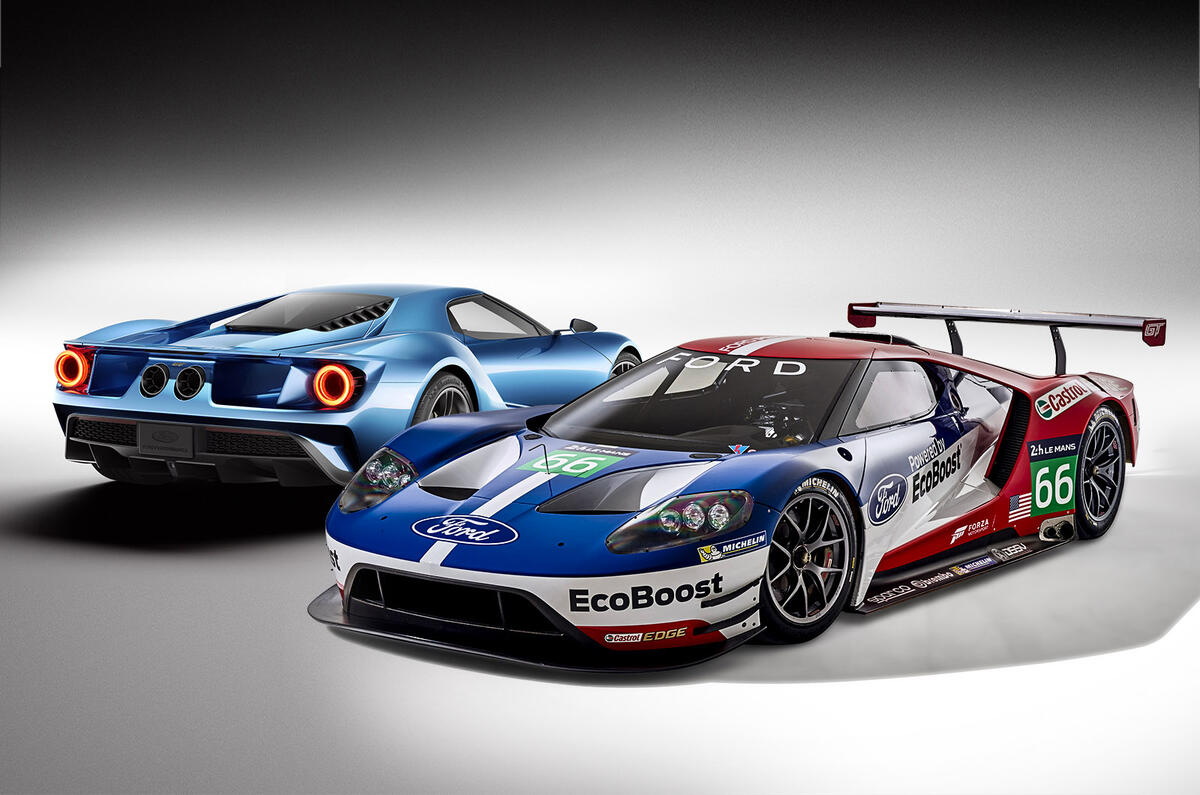Confirmation last month that the Ford GT will compete next year at the Le Mans 24 Hours enabled company chiefs to tell the whole story about the development of their new supercar for the first time.
Ford has confirmed the specifications of its road-going GT. Click here for more.
With news of the GT’s competition intent top secret until mid-June, the men charged with developing the car had previously been unable to emphasise just how extreme and driver-focused the road-going version will be.
Video: Autocar drives the Ford GT
With news of the race and road projects out in the open, however, Ford’s top brass have lifted the lid on how the two cars are intertwined from a development perspective.
At Le Mans, Autocar sat down with Mark Fields (president and chief executive of Ford Motor Company), Raj Nair (chief technical officer) and Jim Farley (president of Ford in Europe, Middle East and Africa) to get the full story on the GT’s gestation.
Why is Ford returning to GT racing?
Ford is undeniably proud of its endurance racing achievements. On the wall of the offices in Dearborn, Michigan, next to the elevator, is a black and white photo of the GT40’s 1-2-3 finish at Le Mans in 1966. But that achievement is now distant history for a company that’s changed immeasurably in the half-century since.
The arrival of the new GT has been the catalyst. With this car, Ford can both celebrate Ford’s past and look to its future. Yes, it will doff its cap in the direction of the GT40’s achievements, but it will also add lustre to the new Ford Performance sub-brand, highlight the cutting-edge technology Ford is introducing and provide an exciting focal point for brand devotees, many of whom will join the throng heading to La Sarthe in June 2016.
“This is not just about going racing because Raj and his team wanted to produce a really cool race car; that’s part of it, of course, but the other part is that we want to link it to things we’ve been doing in other areas,” says Fields.
“In a practical sense it gives Raj and his team the opportunity to prove some technology and some engineering tools and to train some engineers at a very demanding race. At the same time it instils a lot of pride in all of our employees because of that heritage linking to our racing.
“The other point is about how this helps all our customers. The GT is a culmination of over a decade’s worth of work that Raj and his team have been doing on innovation around light-weighting, aerodynamics and engine technology, and that says for all of our customers ‘you can get a piece of this innovation’ in any of our vehicles when they walk into a Ford showroom.”




Add your comment